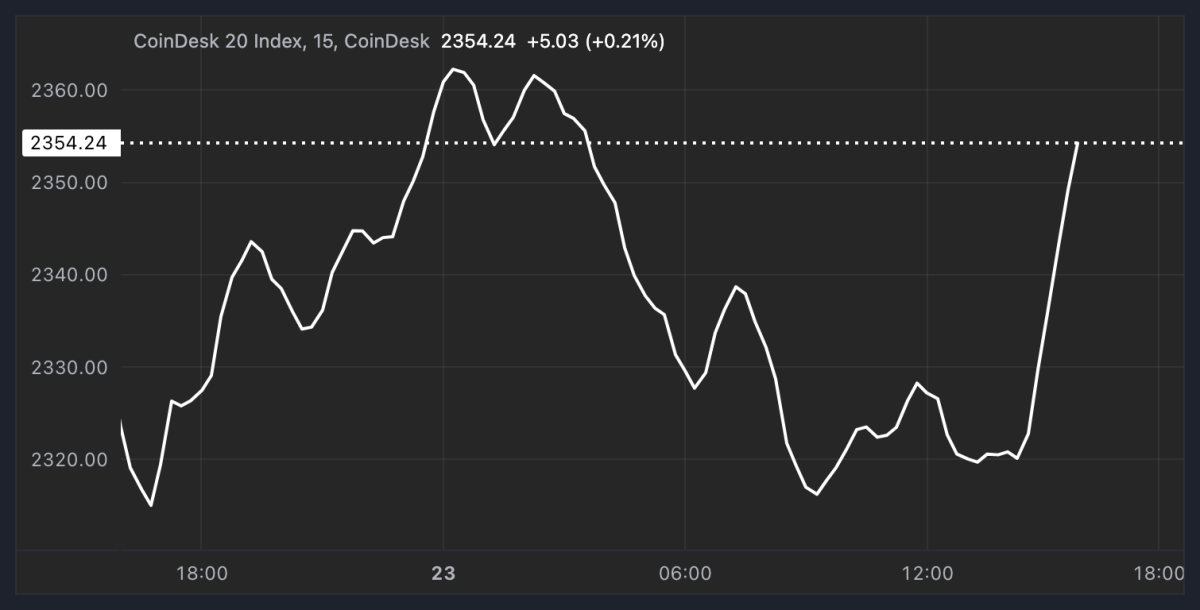As Monday’s trading session closed, the crypto market was riding high. Bitcoin had just touched the vicinity of $67,000, easing fears of a steeper pullback. This recent surge followed the major halving event over the weekend, where Bitcoin’s new supply issuance was slashed by half, allowing it to gain over 3% in the past 24 hours with a trading price pinned at $66,500. Ethereum, on the other hand, lagged slightly with a 1.5% increase, hovering around $3,200.
Market Enthusiasm Across the Board
The bullish trend wasn’t confined to the big guns.
A total of 171 out of almost 10000 cryptocurrencies listed on CoinMarketCap enjoyed gains. The CoinDesk 20 Index (CDI), encompassing major cryptos, also recorded a rise of over 3%, spearheaded by a 15% jump in Near Protocol’s native token (NEAR). The ripple effect of this bullish behavior reached the stocks focused on digital assets, with Coinbase (COIN) and MicroStrategy (MSTR) seeing jumps of 7% and 12% respectively.

The excitement was palpable among publicly traded mining companies as well. Riot Platforms (RIOT) and Hut 8 Mining Corp (HUT) experienced surges between 15%-20%, and Marathon Digital (MARA) went up by 6%. This frenzy was fueled by a spike in transaction fees, a crucial revenue stream for these companies, hinting at healthier financial forecasts ahead.
Yet, not everyone is sold on the buoyancy. Markus Thielen, founder of 10x Research, in a recent dialogue with CoinDesk TV, remarked that Bitcoin’s halving is far from a bullish signal. He predicted a fragile market in the coming months and a possible deeper dive. The core of the issue, according to Thielen, lies in miners who might dump around $5 billion worth of Bitcoin to sustain operations after seeing their revenues halved.
Thielen’s views find an echo in the history of Bitcoin’s price post-halving, which has traditionally seen a significant rise 50-100 days following the event. This pattern was also highlighted in a recent update by crypto hedge fund QCP Capital, suggesting that Bitcoin bulls might soon start to bolster their positions aggressively.
Further complicating the market dynamics are the funding rates, especially for leveraged positions in derivatives trading, which have cooled significantly. Some rates have even plummeted into steep negative territory, particularly for less mainstream cryptocurrencies, setting the stage for a potential quick rebound if investor appetite for risk returns.
Emerging Trends and Layer 2 Opportunities
The event also marked the onset of “Epoch V” of Bitcoin, which saw the debut of Runes, a new protocol for creating meme coins on the Bitcoin network. This launch, coupled with the halving, has already spurred the creation of hundreds of tokens, pushing transaction fees through the roof. An average cost now stands at over $70, a staggering increase from prior averages.
This steep increase in transaction fees on April 20, which peaked at $128, could be a catalyst for shifting more users to alternative solutions like the Lightning Network or side chains such as Fedimint and Ark. Bitcoin Core developer Ava Chow suggests that high fee environments will likely drive the community to explore these layer 2 solutions more seriously.
Supporting Chow’s predictions, a recent report from Messari underscores the necessity of layer-2 solutions as Bitcoin evolves beyond being merely digital gold to becoming a more expansive platform for development. This transformation has been partly fueled by the Ordinals protocol, enabling data storage on Bitcoin’s smallest units, satoshis, leading to a surge in transactions and NFT-like inscriptions.
Moreover, the performance of tokens related to Bitcoin’s layer 2 solutions has been noteworthy. Post-halving, tokens like Elastos’ ELA and SatoshiVM’s SAVM have seen substantial gains, underscoring the market’s shifting focus towards these secondary platforms.
However, the rapidly-growing interest and subsequent activity on these layer 2 platforms highlight an emerging challenge; accessibility. High transaction fees could potentially price out users with smaller balances from utilizing non-custodial services like the Lightning Network. This issue is exacerbated as each layer 2 solution still requires an on-chain transaction to function, as noted by Chow.
Despite these struggles, solutions are emerging, such as custodial Lightning services that help mitigate the cost of transactions, ensuring that even in a high-fee environment, new users can still find a foothold in the Bitcoin market.
Land a High-Paying Web3 Job in 90 Days: The Ultimate Roadmap
